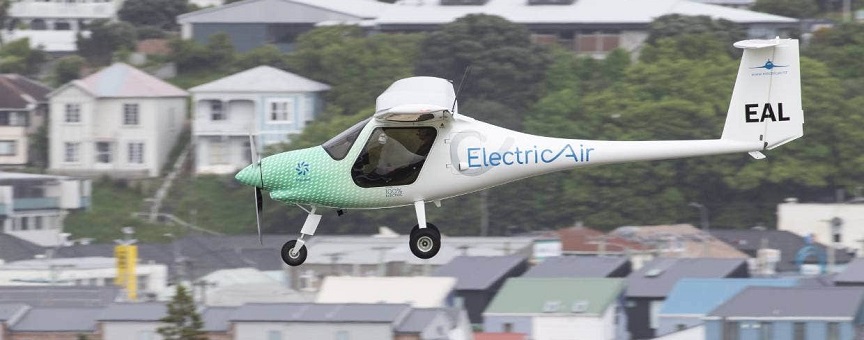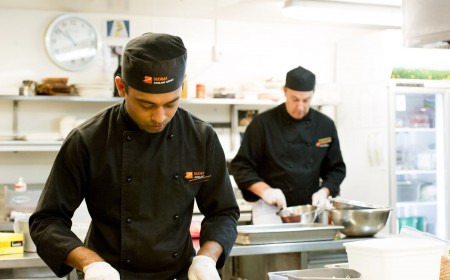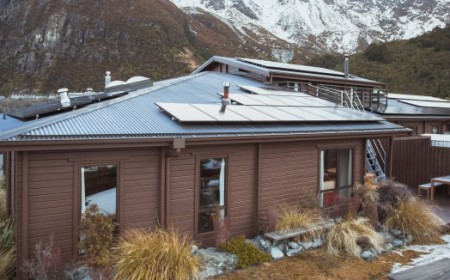First Electric Flight over Cook Strait
1 Nov 2021
The first thing pilot Gary Freedman saw as his tiny electric plane broke through the cloud was the wind turbine – a beacon of clean energy, and a sign the runway wasn't far off.
The two-seater Pipistrel Alpha Electro, owned by his Christchurch-based company ElectricAir, touched down at Wellington Airport around 10am – the first battery-powered, emission-free plane to cross Cook Strait.
Freedman was all smiles on the tarmac, as he told the waiting crowd about his journey. Planning began months ago.
“This is the third time we've thought about doing this,” he said. The previous attempts had been thwarted by Covid-19 restrictions.
Everything was meticulously planned, but when they arrived at Blenheim airport on Monday morning, it was raining. The Pipistrel was accompanied by a Sounds Air Cessna Caravan – a comforting presence.
“We were running a little bit late, but we realised we could take off and stay low until we were out over the sea.
“It felt better and better as we came through, and then at the halfway point we experienced this cloud of rain. We couldn’t see very much, there was rain was hitting the windscreen. I was slightly worried then, to be honest.”
Spotting the Wellington coastline was a relief.
“The first thing I saw was the wind turbine spinning away. I thought, 'Here we go, it’s Cop26 – we’re doing this epic environmental flight, and the first thing I see is this wind turbine. Then I saw Wellington city coming into view.
"It was the first time I'd been happy and excited about the flight."
The plane will be at Wellington Airport for a week, providing an opportunity for the airport, partners and the Government to see what the future of electric travel might look like.
Climate Change Minister James Shaw, speaking to the group of public officials and aviation industry professionals gathered in the terminal to celebrate the plane’s arrival, said it was entirely possible the aviation industry could decarbonise faster than the transport industry.
“There's only about four purchasing managers in the entire country who will have to make a different decision once the technology becomes available to them.”
“We've always needed aviation, particularly when it comes to our regional access, and electric aviation opens up a lot of these small remote places, because obviously electricity is so much cheaper than aviation fuel.”
Freedman said the trip from Blenheim, a 45-minute flight, cost only $2 in electricity. The same flight in a similar-sized fuel powered plane would have used about $100 in fuel.
Sounds Air Group chairman Rhyan Wardman was also on hand to watch the flight arrive as his company is set to be the first New Zealand passenger airline to enter the electric aviation market.
He said this flight was a proof of concept. “For Sounds Air, and our ambition to provide zero emission services to our customers, this is the start of illustrating that this technology is here.”
“The early adopters of this new type of aircraft [are] to be small regional airlines such as ourselves," he said. “We needed to be proactive in the space to get one because we could be an early adopter, but two, that our customers are going to expect it.
The airline recently partnered with Heart Aerospace, a Swedish company looking for an Australasian launch partner for its ES-19 aircraft, due for delivery in 2026.
“Airlines throughout the world are looking at solutions to decarbonise,” Wardman said. “Our final ambition is to be a fully electric airline by 2030.”
“We hope people wil be flying in these aircraft within five years.”





